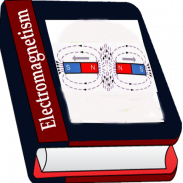




Electromagnetism

Description of Electromagnetism
Electromagnetism is a branch of physics involving the study of the electromagnetic force, a type of physical interaction that occurs between electrically charged particles. The electromagnetic force usually exhibits electromagnetic fields such as electric fields, magnetic fields and light, and is one of the four fundamental interactions (commonly called forces) in nature. The other three fundamental interactions are the strong interaction, the weak interaction and gravitation.
Lightning is an electrostatic discharge that travels between two charged regions.
The word electromagnetism is a compound form of two Greek terms, ἤλεκτρον ēlektron, "amber", and μαγνῆτις λίθος magnētis lithos, which means "Μagnesian stone", a type of iron ore. Electromagnetic phenomena are defined in terms of the electromagnetic force, sometimes called the Lorentz force, which includes both electricity and magnetism as different manifestations of the same phenomenon.
The electromagnetic force plays a major role in determining the internal properties of most objects encountered in daily life. Ordinary matter takes its form as a result of intermolecular forces between individual atoms and molecules in matter, and is a manifestation of the electromagnetic force. Electrons are bound by the electromagnetic force to atomic nuclei, and their orbital shapes and their influence on nearby atoms with their electrons is described by quantum mechanics. The electromagnetic force governs the processes involved in chemistry, which arise from interactions between the electrons of neighboring atoms.
There are numerous mathematical descriptions of the electromagnetic field. In classical electrodynamics, electric fields are described as electric potential and electric current. In Faraday's law, magnetic fields are associated with electromagnetic induction and magnetism, and Maxwell's equations describe how electric and magnetic fields are generated and altered by each other and by charges and currents.





















